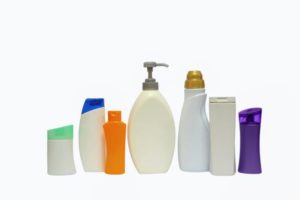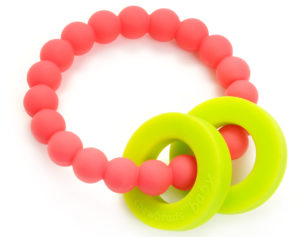![]() Even though many, many personal care products contain parabens, the evidence is accumulating that parabens have negative health effects. And now research suggesting that perhaps they may be a factor in developing breast cancer. This latest study was done "in vitro" - meaning looking at the effects of chemicals on human breast cells (in culture dishes), but the results absolutely should make someone think twice about all the parabens in products, and how they accumulate in us. Research has already found parabens in the human breast, but many thought that the levels were too low to promote cancer.
Even though many, many personal care products contain parabens, the evidence is accumulating that parabens have negative health effects. And now research suggesting that perhaps they may be a factor in developing breast cancer. This latest study was done "in vitro" - meaning looking at the effects of chemicals on human breast cells (in culture dishes), but the results absolutely should make someone think twice about all the parabens in products, and how they accumulate in us. Research has already found parabens in the human breast, but many thought that the levels were too low to promote cancer.
Parabens are common ingredients in cosmetics, shampoos, body lotions and sunscreens, where they are used to prevent microbial growth and prolong shelf life. Common names of parabens are: methylparaben, ethylparaben, propylparaben, and butylparaben. Detectable levels of multiple parabens are present in human urine and breast tissue. Bottom line: Parabens are endocrine disrupting chemicals that mimic estrogens and may have effects at very low doses to stimulate breast cancer cell growth. So read labels of personal care products and avoid those with parabens. From Futurity:
New Tests Suggest Parabens Carry Cancer Risk
A group of chemicals called parabens—common ingredients in personal care products—may interact with growth factors in the body to increase the risk of breast cancer, according to new research. Parabens are preservatives widely used in everything from shampoos and cosmetics to body lotions and sunscreens. The chemicals have generated increasing health concerns, however, because they mimic estrogens, which have been linked to an increased risk of breast cancer and reproductive problems.
“Although parabens are known to mimic the growth effects of estrogens on breast cancer cells, some consider their effect too weak to cause harm,” says lead investigator Dale Leitman, a gynecologist and molecular biologist at the University of California, Berkeley, and an adjunct associate professor of nutritional sciences and toxicology. “But this might not be true when parabens are combined with other agents that regulate cell growth.”
Existing chemical safety tests, which measure the effects of chemicals on human cells, look only at parabens in isolation, he says. They fail to take into account that parabens could interact with other types of signaling molecules in the cells to increase breast cancer risk.
To better reflect what goes on in real life, Leitman and his colleagues looked at breast cancer cells expressing two types of receptors: estrogen receptors and HER2. Approximately 25 percent of breast cancers produce an abundance of HER2, or human epidermal growth factor receptor 2. HER2-positive tumors tend to grow and spread more aggressively than other types of breast cancer.
The researchers activated the HER2 receptors in breast cancer cells with a growth factor called heregulin that is naturally made in breast cells, while exposing the cells to parabens. Not only did the parabens trigger the estrogen receptors by turning on genes that caused the cells to proliferate, but also the effect was significant. The parabens in the HER2-activated cells were able to stimulate breast cancer cell growth at concentrations 100 times lower than in cells that were deprived of heregulin.
The study demonstrates that parabens may be more potent at lower doses than previous studies have suggested, which may spur scientists and regulators to rethink the potential impacts of parabens on the development of breast cancer, particularly on HER2 and estrogen receptor positive breast cells. The findings also raise questions about current safety testing methods that may not predict the true potency of parabens and their effects on human health.

 More and more studies are finding negative health effects from hormone disrupting chemicals (which we are exposed to every single day, and subsequently which are in all of us), such as parabens, phthalates, Bisphenol-A (BPA), and chemical substitutes for BPA such as Bisphenol-S (BPS) and BPF. The
More and more studies are finding negative health effects from hormone disrupting chemicals (which we are exposed to every single day, and subsequently which are in all of us), such as parabens, phthalates, Bisphenol-A (BPA), and chemical substitutes for BPA such as Bisphenol-S (BPS) and BPF. The A report released this week by the Endocrine Society states that the list of health problems that scientists can confidently link to exposure to hormone-disrupting chemicals has grown to include: diabetes, cardiovascular disease, obesity, reproductive and developmental problems, thyroid impairment, certain reproductive cancers, and neurodevelopmental problems such as decreased IQ. This statement (report) is based on the summaries of 1300 studies on endocrine disrupting chemicals (EDCs), and it also adds support to the idea that even
A report released this week by the Endocrine Society states that the list of health problems that scientists can confidently link to exposure to hormone-disrupting chemicals has grown to include: diabetes, cardiovascular disease, obesity, reproductive and developmental problems, thyroid impairment, certain reproductive cancers, and neurodevelopmental problems such as decreased IQ. This statement (report) is based on the summaries of 1300 studies on endocrine disrupting chemicals (EDCs), and it also adds support to the idea that even  Finding endocrine disrupting chemicals in 2 out of 10 baby teethers, which are supposedly safe products for babies, is disturbing. Unfortunately the study did not give the manufacturers names. There was even an 11th teether made of natural rubber that was found to leach compounds that were "
Finding endocrine disrupting chemicals in 2 out of 10 baby teethers, which are supposedly safe products for babies, is disturbing. Unfortunately the study did not give the manufacturers names. There was even an 11th teether made of natural rubber that was found to leach compounds that were " The bottom line is to read the ingredients list on products, and avoid all products labeled "antimicrobial" or "antibacterial" (because those are the ones typically containing triclosan and triclorocarban). Over 2000 products contain antibacterial compounds. I've even seen them in pillows, pillow protectors, mattress pads, dish racks, toys, and blankets! As we know from the latest microbiology research, we need to cultivate a healthy microbiome, and not throw it out of whack by continuously trying to kill off all bacteria. From The Atlantic:
The bottom line is to read the ingredients list on products, and avoid all products labeled "antimicrobial" or "antibacterial" (because those are the ones typically containing triclosan and triclorocarban). Over 2000 products contain antibacterial compounds. I've even seen them in pillows, pillow protectors, mattress pads, dish racks, toys, and blankets! As we know from the latest microbiology research, we need to cultivate a healthy microbiome, and not throw it out of whack by continuously trying to kill off all bacteria. From The Atlantic: